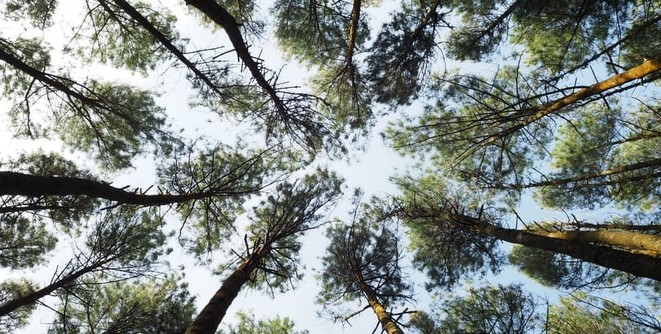Forests are one of the most important ecosystems on the planet, covering over 30% of its land area. They are the lungs of the Earth, home to some of the rarest species of plants and animals and provide food and fuel for millions of people worldwide. However, what we might think of as the forest – the trunks, the leaves, the canopy above our heads – is only half of the story.
Below our feet lives a dense network of fungi living in and around the tree roots, sometimes termed the Wood Wide Web, connecting trees to one another and providing nutrients and minerals to the trees in exchange for carbohydrates in one of Earth’s most ancient symbiotic relationships. In fact, this symbiosis is thought to be a key factor enabling the colonisation of land by plants over 460 million years ago.

Even today, fungi-plant relationships can determine the ability of a plant to adapt to new environments and climates. There are a variety of well understood fungal and plant relationships, however their impact on plant-plant interactions has only recently been explored. Recent research suggests that the fungal web enables different trees to send nutrients to each other, with particular stronger links between certain plant species.
Back in 2016, Suzanne Simard, a professor at The University of British Columbia, discussed this idea in a Ted Talk which opened up the discussion of the Wood Wide Web. As someone who had spent lots of her childhood in forests, she unknowingly stumbled upon the fungal network after her dog fell down into a pit.
Years later she began to study how this network functioned, and the impact it might have on the forest as a whole. Using radioactive labelled carbon, she planted birch, pine and cedar seedlings and measured the movement of the carbon between the three. What she found was very surprising: during the winter months, the evergreen pine would send carbon to the birch to help it survive the winter when it loses its leaves and cannot photosynthesise, but during summer the birch would return this favour and send carbon to the pine to help it grow when the birch was more efficiently photosynthesising. Interestingly, the cedar did not interact; it was in a separate world completely. While Simard expected to see interactions between the pine and the birch, what she didn’t anticipate was the way mother trees, called hubs, would seek out and form strong fungal links with their daughter seedlings. This increases seedling survival by four times, as the hub tree sends sugars and minerals via the network. As well as nutrients, the daughters will also receive defence and warning signals if the hub tree senses disease or water stress. Even in older trees this trend continues, as a recent study has shown the greater a tree’s network, the higher chance of its survival.
This has major implications for plantations and ecosystems alike, as removal of too many hub trees can cause collapse of the entire forest. Therefore, to increase plantation efficiency and ecosystem biodiversity it is vital to find the balance between hub trees and seedlings to maintain forest growth.
More recently Professor Thomas Crowther, a researcher in Zurich, Switzerland undertook a major project to map this network. This highlighted the impact of these fungal networks in climate change, and the impact climate change would have on them. Currently, 60% of trees worldwide are linked to a type of fungi that stores carbon in the ground, but as temperatures rise, the climate favours those that release carbon in the form of carbon dioxide into the atmosphere. This forms a cycle that encourages the transition to carbon-emitting fungi with higher temperatures. Chemical pollution from plant fertilisers enhances this cycle and has caused a significant decline in these networks in forests worldwide.
It is becoming increasingly clear these unseen networks are also a forgotten aspect of global warming. Perhaps consideration of these incredible organisms could help the numerous forest regeneration projects worldwide, or simply help us appreciate our incredible forests just a little bit more.
By Indi Lacey
Header image: Aldino Hartan Putra/Unsplash

